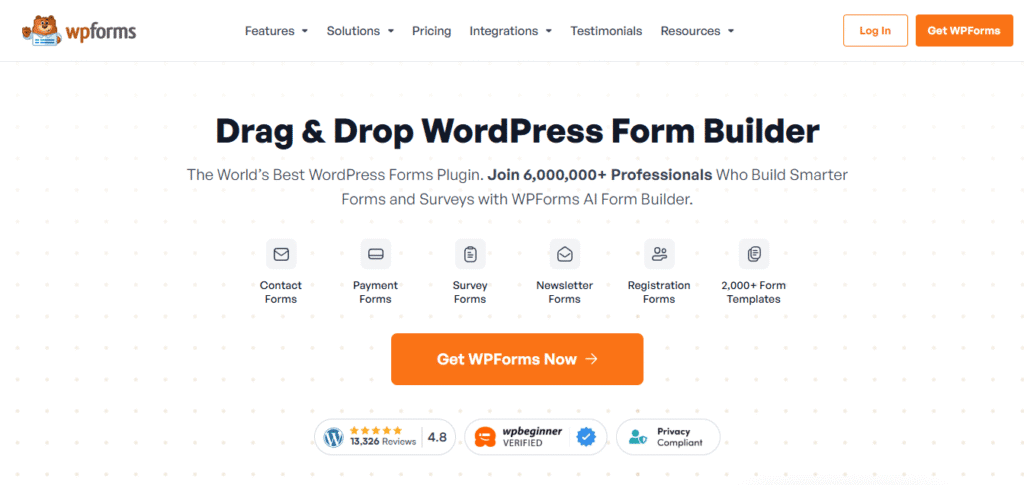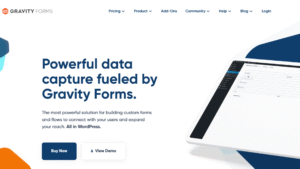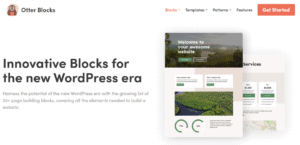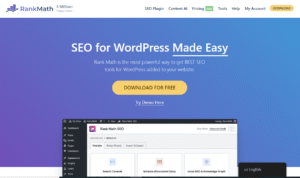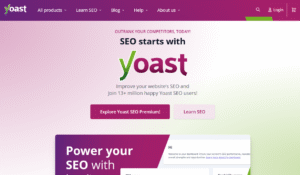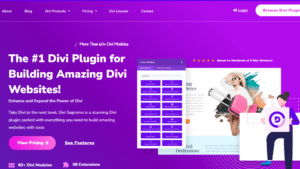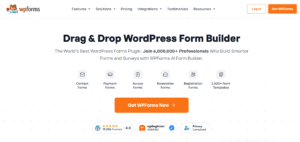Have you ever clicked on a website, ready to sign up, contact the owner, or make a quick purchase—only to get frustrated by a clunky or confusing form? It happens all the time, and here’s the truth: a poorly designed form can make visitors click away faster than you think.
On the flip side, a smooth, user-friendly form can turn casual visitors into loyal subscribers, paying customers, or engaged community members.
That’s where WPForms comes in. Known as one of the most beginner-friendly and powerful WordPress plugins, WPForms makes creating professional forms as easy as dragging and dropping.
No coding, no headaches—just beautiful, functional forms that actually work. Whether you’re running a blog, a small business, or a full-fledged eCommerce site, WPForms can help you connect with your audience and boost conversions without breaking a sweat.
Why Forms Are Crucial for Websites
Forms are the bridge between you and your audience. Whether you’re running a blog, an online store, or a corporate website, forms give your visitors a way to interact with you. Imagine walking into a store with no checkout counter or no way to ask questions—it wouldn’t make sense, right?
That’s exactly what happens to a website without forms.
Forms let people:
- Contact you easily (no more hunting for email addresses).
- Subscribe to newsletters so you can grow your email list.
- Register for events or services without messy back-and-forth emails.
- Make payments or donations securely.
- Provide feedback or take surveys, giving you valuable insights.
In short, forms aren’t just a nice feature—they’re essential for engagement, lead generation, and conversions. Without them, you risk losing potential customers or missing out on important communication.
Quick Overview of WPForms
Now that you know why forms matter, let’s talk about the tool that makes building them painless: WPForms.
WPForms is a WordPress form builder plugin created to be beginner-friendly yet powerful enough for advanced users. It eliminates the need for coding, replacing it with a drag-and-drop builder that anyone can use.
Here’s what makes it stand out:
- It comes with ready-to-use templates for common forms like contact, registration, and payment forms.
- It’s mobile-responsive, so your forms look good on phones, tablets, and desktops.
- It integrates with popular tools like Mailchimp, PayPal, Stripe, and more.
- It includes smart features like conditional logic (showing or hiding fields based on user input).
Simply put, WPForms takes the stress out of form building, giving you professional results in minutes—even if you’ve never touched a line of code.

What is WPForms?
WPForms is a WordPress form builder plugin designed to help anyone—whether a beginner or a seasoned developer—create powerful and professional forms without coding. At its core, WPForms simplifies what used to be a technical and time-consuming process.
Instead of tinkering with HTML or hiring a developer, you can build a form in minutes using its drag-and-drop interface.
Whether you need a simple contact form, a survey, a payment form, or even a job application form, WPForms offers a ready-made solution that looks great, works smoothly, and integrates seamlessly with other tools you already use.
Background of the Plugin
WPForms was launched in 2016 by Syed Balkhi and Jared Atchison, two names well-known in the WordPress ecosystem. Syed is also the founder of popular platforms like WPBeginner and OptinMonster, while Jared is a seasoned WordPress developer. Their mission was clear:
“Make WordPress form building easy, fast, and user-friendly.”
Before WPForms, most form plugins were either too basic (lacking features) or too complex (hard for beginners to use). WPForms filled that gap by combining simplicity with powerful features, giving users the best of both worlds.
Since its launch, WPForms has gone through continuous improvements, regularly releasing updates, new features, and add-ons to keep up with user needs and the latest web trends.
Popularity and Trust in the WordPress Community
It didn’t take long for WPForms to gain traction. Today, it’s:
- Trusted by over 6 million WordPress websites worldwide.
- Rated 4.9 out of 5 stars on WordPress.org with thousands of positive reviews.
- Often recommended by top WordPress blogs, hosting providers, and developers.
What makes it so trusted? It’s not just the features—it’s the reliability, user experience, and strong support behind the plugin. The team consistently listens to user feedback and releases updates that make form building even easier.
In fact, WPForms has become the go-to form builder for bloggers, small businesses, nonprofits, and even enterprise-level companies because it strikes the perfect balance between being beginner-friendly and offering advanced features for professionals.
Key Features of WPForms
When it comes to form builders, not all plugins are created equal.
Some are too basic, offering little flexibility, while others overwhelm you with a steep learning curve. WPForms strikes a perfect balance—it’s simple enough for beginners yet powerful enough for professionals. Let’s break down its core features that make it a favorite in the WordPress community.
Drag-and-Drop Builder
One of the biggest selling points of WPForms is its drag-and-drop form builder. Instead of fiddling with complicated code, you can literally drag form fields—like name, email, phone number, or dropdowns—into place. Want to rearrange them? Just drag and drop again.
Think of it as building with Lego blocks. You piece together the fields you need, and within minutes, you’ve created a functional form that looks polished and professional. This feature eliminates the intimidation factor, especially for beginners who don’t have technical skills.
Pre-Built Templates
Starting from scratch can be daunting, even with a simple form builder. That’s why WPForms comes with hundreds of pre-built templates designed for specific purposes.
For example, you’ll find templates for:
- Contact forms to let visitors reach you.
- Newsletter signup forms to grow your email list.
- Payment forms to collect money directly from your website.
- Survey forms to gather customer feedback.
- Event registration forms for webinars, conferences, or meetups.
These templates save you time and effort. Instead of creating everything field by field, you can pick a template that’s 90% ready and customize it to fit your exact needs.
Responsiveness and Mobile-Friendly Forms
In today’s mobile-first world, having forms that adapt to every screen size is a must. Imagine filling out a form on your phone, and the fields don’t fit the screen—you’d probably abandon it instantly.
With WPForms, that’s never an issue. All forms are responsive by default, meaning they automatically adjust to desktops, tablets, and smartphones. No extra tweaking required.
This isn’t just about convenience—it’s about conversions. Mobile users make up a huge percentage of website traffic, and if your forms don’t work well on smaller screens, you’ll lose potential leads or sales. WPForms ensures that your visitors can submit forms seamlessly, no matter what device they’re on.
Why Choose WPForms Over Competitors?
There are plenty of WordPress form builder plugins out there—Contact Form 7, Gravity Forms, Ninja Forms, and Formidable Forms, just to name a few. So, why do millions of users prefer WPForms? It all boils down to three things: ease of use, performance and reliability, and integrations.

Ease of Use
Let’s be real—most website owners aren’t developers. You don’t want to spend hours learning how to code or configuring complex settings just to build a simple contact form.
WPForms was designed with simplicity at its core. From the moment you install it, everything feels intuitive. The drag-and-drop builder makes form creation straightforward, while the pre-built templates save you from reinventing the wheel. Even if you’ve never created a form before, you’ll feel like a pro within minutes.
In contrast, many competitors either overwhelm you with options or require coding knowledge. WPForms keeps things clean, beginner-friendly, and frustration-free—without sacrificing advanced functionality for those who need it.
Performance and Reliability
A form plugin isn’t just about looks—it also needs to work flawlessly every time. Imagine a customer trying to submit an order form and it fails. That’s not just a lost lead; it’s lost trust.
WPForms is built with speed and reliability in mind. It’s lightweight, meaning it won’t slow down your site, and it’s regularly updated to stay compatible with the latest versions of WordPress and popular themes.
On top of that, WPForms has built-in spam protection (like reCAPTCHA and honeypot techniques) to ensure that the entries you get are real, not junk. The result? A smooth, dependable experience for both you and your users.
Integrations
A great form doesn’t just collect information—it connects with the tools you already use to manage your business. WPForms shines here with powerful integrations that expand what your forms can do.
Some popular integrations include:
- Email marketing tools like Mailchimp, Constant Contact, AWeber, and GetResponse.
- Payment gateways like PayPal and Stripe, so you can accept donations, payments, or orders directly through your forms.
- CRM and automation platforms like Zapier, Salesforce, and HubSpot for streamlining workflows.
Instead of juggling multiple tools or manually transferring data, WPForms makes sure everything works together seamlessly. This saves time, reduces errors, and keeps your business running smoothly.
In short, WPForms stands out because it’s easy to use, highly reliable, and packed with integrations that make your website more powerful. Whether you’re a blogger, small business owner, or running an online store, WPForms gives you a hassle-free way to create forms that actually get results.
Step-by-Step: How to Install WPForms
Getting started with WPForms is refreshingly simple. You don’t need to be a tech wizard to set it up—just follow a few clicks, and you’re ready to create your first form. Here’s a quick walkthrough:

Installing from WordPress Dashboard
- Log in to your WordPress site.
Head over to your WordPress admin dashboard. - Go to Plugins → Add New.
From the sidebar, click on “Plugins” and then select “Add New.” - Search for WPForms.
In the search bar at the top right, type in “WPForms.” You’ll see WPForms Lite (the free version) appear. - Click “Install Now.”
Hit the Install Now button, and WordPress will automatically download the plugin. - Wait for the installation to complete.
This usually takes just a few seconds.
Activating and Setting Up
- Activate the plugin.
Once installed, the button changes to Activate. Click it, and WPForms will now be active on your site. - Locate WPForms in your dashboard.
After activation, you’ll notice a new WPForms tab in your WordPress sidebar. - Run the setup wizard (optional but recommended).
WPForms comes with a beginner-friendly setup wizard that guides you through creating your first form. If you’re brand new, this is a great place to start. - Configure basic settings.
- Enter your license key if you’re using the Pro version (you’ll find this in your WPForms account).
- Adjust settings like email notifications and default confirmations.
- You’re all set!
From here, you can either use a pre-built template or start dragging and dropping fields to build your first form.
In less than five minutes, you can go from having no form builder to having WPForms fully installed and ready to use.
Creating Your First Form
Now that WPForms is installed and activated, it’s time to roll up your sleeves and create your very first form. Don’t worry—this part is just as simple as the installation. You’ll be amazed at how quickly you can go from a blank page to a fully functional form.

Step 1: Open the Form Builder
- In your WordPress dashboard, go to WPForms → Add New.
- This will launch the WPForms form builder interface, where the magic happens.
Step 2: Choose a Template
- WPForms gives you several pre-built templates to kickstart your form.
- For beginners, the Simple Contact Form is a perfect starting point. It already includes essential fields like name, email, and message.
- If you prefer to start from scratch, choose the Blank Form option and build it field by field.
Step 3: Customize Your Fields
- Using the drag-and-drop builder, add or remove form fields. For example:
- Add a Phone Number field if you want more contact details.
- Include a Dropdown or Checkbox for multiple-choice questions.
- Use a File Upload field if you want users to send documents or images.
- Rearranging fields is as easy as dragging them into the order you want.
Step 4: Configure Form Settings
- Click on the Settings tab to adjust important options such as:
- Form Name & Description – Give your form a clear title.
- Notifications – Decide where form submissions should be sent (usually your email).
- Confirmations – Customize the message visitors see after submitting a form (e.g., “Thanks for reaching out!”).
Step 5: Save Your Form
- Don’t forget to click the Save button in the top right corner. This ensures all your changes are stored.
Step 6: Publish Your Form
Now that your form is ready, it’s time to display it on your site. You have multiple options:
- Add to a Page or Post
- Open the page or post where you want the form to appear.
- Use the WPForms block in the WordPress block editor, select your form, and hit Publish.
- Add via Shortcode
- WPForms provides a shortcode for every form. Simply copy it and paste it anywhere on your site, including sidebars or custom layouts.
- Use a Widget
- Go to Appearance → Widgets and drag the WPForms widget into your sidebar or footer.
That’s it! In just a few steps, you’ve created and published your first form. Visitors can now interact with your site, and submissions will go directly to your inbox or connected tools.
Types of Forms You Can Create with WPForms
One of the best things about WPForms is its flexibility. You’re not limited to just contact forms—you can build a wide variety of forms for different purposes. Whether you’re running a personal blog, a nonprofit, or an eCommerce store, WPForms has you covered. Let’s look at some of the most popular types of forms you can create.
Contact Forms
Every website needs a contact form. It’s the simplest way for visitors to get in touch without digging around for your email address. With WPForms, you can create a clean and professional contact form in minutes.
Common uses:
- General inquiries
- Support requests
- Business partnerships
Survey and Feedback Forms
Want to know what your visitors think? Use survey forms to collect opinions and insights. WPForms even includes survey reporting features, so you can visualize results in graphs and charts.
Common uses:
- Customer satisfaction surveys
- Event feedback forms
- Product research questionnaires
Registration Forms
If you’re hosting events, webinars, or even running a membership site, registration forms are a must. WPForms lets you collect attendee details and even connect the form with payment gateways if your event is paid.
Common uses:
- Webinar or workshop sign-ups
- Membership applications
- Volunteer registrations
Payment and Donation Forms
WPForms integrates seamlessly with PayPal and Stripe, which means you can accept payments directly through your website. Whether you’re selling a product, charging for a service, or collecting donations, it’s all possible without needing a full shopping cart setup.
Common uses:
- Service booking payments
- Online orders
- Nonprofit donations
Newsletter Signup Forms
Growing your email list is one of the smartest things you can do for your business. With WPForms, you can build newsletter signup forms and connect them directly to email marketing platforms like Mailchimp, Constant Contact, or AWeber.
Common uses:
- Blog newsletter subscriptions
- Promotional signups
- Lead magnet downloads (e.g., eBooks, checklists)
Job Application Forms
If you’re hiring, you can create job application forms with fields for resumes, cover letters, and other required details. With the file upload option, applicants can send documents directly through the form.
Common uses:
- Full-time job applications
- Freelancer submissions
- Internship requests
Other Custom Forms
Because WPForms is so customizable, you can build forms for just about anything you imagine. Some creative uses include:
- Appointment booking forms
- Contest or giveaway entry forms
- Order request forms for small businesses
WPForms isn’t just a contact form plugin—it’s a multi-purpose form solution that can adapt to almost any website need.
Advanced Features of WPForms
WPForms isn’t just about creating simple forms—it also comes with advanced features that let you build powerful, customized forms tailored to your exact needs. These features are perfect for businesses, eCommerce sites, nonprofits, and anyone who wants to take form-building to the next level. Let’s explore some of the standout advanced options.
Smart Conditional Logic
Conditional logic lets your forms change dynamically based on a user’s input. In other words, certain fields will only appear if they’re relevant.
For example:
- If someone selects “Yes” to a question like “Do you want to subscribe to our newsletter?”, then an email signup field appears.
- If a user chooses a specific service from a dropdown, only the related options or pricing fields show up.
This keeps your forms short, personalized, and user-friendly—which increases completion rates. Instead of overwhelming users with too many fields, you only show them what they need.
File Upload Fields
Sometimes, you need more than just text responses. With WPForms, you can easily add file upload fields so users can send documents, images, or PDFs directly through your form.
Practical uses include:
- Job applications (upload resumes, cover letters)
- Photography contests (upload photos)
- Customer support (upload screenshots of issues)
The file upload feature makes it simple to collect additional data without relying on email attachments. Plus, it’s secure and all uploads are stored neatly in your WordPress dashboard.
Multi-Page Forms
Long forms can feel overwhelming, but WPForms solves this with multi-page forms. Instead of displaying everything at once, you can break your form into easy-to-digest steps.
Benefits include:
- Better user experience – People don’t feel like they’re filling out an endless form.
- Higher completion rates – Step-by-step forms reduce drop-offs.
- Professional look – Progress bars keep users motivated to finish.
For example, a job application form could be split into:
- Personal details
- Education background
- Work experience
- Upload documents
By chunking information, you make the process smooth and approachable.
These advanced features—conditional logic, file uploads, and multi-page forms—transform WPForms from a basic contact form tool into a powerful business solution.
They help you collect better data, improve user experience, and increase conversions.
Integrations and Add-ons
One of the biggest strengths of WPForms is how well it plays with other tools.
A form is more than just a way to collect information—it should also connect with your existing workflows, whether that’s email marketing, payments, or customer management. WPForms makes this easy through a wide range of integrations and add-ons.
Email Marketing Tools
Growing your email list is a top priority for many website owners. WPForms integrates seamlessly with popular email marketing services, so new subscribers go directly into your mailing lists.
Some supported platforms include:
- Mailchimp – Great for automated campaigns and audience segmentation.
- Constant Contact – Perfect for beginners building simple newsletters.
- AWeber – Trusted tool for managing email campaigns.
- GetResponse – Ideal for advanced marketers who need automation.
- Drip – Excellent for eCommerce email workflows.
Instead of manually exporting and importing email addresses, everything is automated.
Payment Processors
Need to collect money through your forms? WPForms has you covered with built-in integrations for popular payment gateways.
- PayPal Standard & PayPal Commerce – Quick and easy way to accept payments or donations.
- Stripe – A sleek, modern payment solution that works globally.
- Square – Perfect for small businesses that already use Square for in-person sales.
This is especially useful for nonprofits collecting donations, freelancers billing clients, or small shops selling products or services without needing a full shopping cart setup.
CRM and Workflow Automation
WPForms doesn’t stop at email and payments—it also connects with CRMs and automation platforms to streamline your business processes.
- HubSpot – Sync leads directly with your CRM for better follow-up.
- Salesforce – Ideal for larger businesses managing complex sales funnels.
- Zapier – The ultimate integration tool, connecting WPForms with over 5,000+ apps like Google Sheets, Slack, Trello, and more.
With Zapier, for example, you could automatically send form submissions to a spreadsheet, notify your team on Slack, and create a new Trello card—all from one form submission.
Other Popular Add-ons
WPForms also offers specialized add-ons to extend functionality even further, such as:
- Surveys and Polls Add-on – Collect feedback with interactive polls.
- Form Abandonment Add-on – Capture partial entries when someone starts a form but doesn’t finish.
- Geolocation Add-on – See where users are submitting forms from.
- User Registration Add-on – Let visitors create accounts directly from your forms.
These integrations and add-ons turn WPForms into a complete solution for businesses of all sizes. Whether you want to grow your email list, take payments, automate tasks, or track leads, WPForms makes it possible without the hassle.
WPForms Pricing Plans
WPForms offers flexible pricing so you can choose a plan that matches your needs and budget. Whether you’re just starting with a simple blog or managing a large business website, there’s an option for you. Let’s break it down.
WPForms Lite (Free Version)
If you’re new to form building, WPForms Lite is a great place to start. It’s available directly from the WordPress plugin repository, and it gives you everything you need to build a simple form.
Features include:
- Basic drag-and-drop form builder
- Essential fields (name, email, message, etc.)
- Pre-built contact form template
- Email notifications for new entries
- Basic spam protection
Perfect for: Bloggers, hobby sites, or anyone who just needs a basic contact form without advanced features.
Basic Plan
The Basic Plan is the entry-level paid option, unlocking more advanced features than the Lite version.
Features include:
- All Lite features
- Unlimited forms and entries
- Advanced fields (phone, address, file uploads, etc.)
- Form confirmations and conditional logic
- One year of updates and support
Perfect for: Small websites or solopreneurs who need more customization than the free version allows.
Plus Plan
The Plus Plan is designed for businesses that want to grow their audience with powerful marketing tools.
Features include:
- All Basic features
- Email marketing integrations (Mailchimp, AWeber, GetResponse, and more)
- Advanced form templates
- Priority support
Perfect for: Small businesses, bloggers, or nonprofits focused on email marketing and lead generation.
Pro Plan (Most Popular)
The Pro Plan is the most popular option because it unlocks WPForms’ full potential with advanced features and integrations.
Features include:
- Everything in Plus
- Payment integrations (PayPal, Stripe, Square)
- Surveys and polls add-on
- Multi-page forms and file uploads
- Form abandonment detection
- Geolocation data
- Conditional logic for complex forms
- Advanced add-ons (Zapier, user registration, and more)
Perfect for: Growing businesses, eCommerce stores, and professionals who want payment options, automation, and advanced form capabilities.
Elite Plan
The Elite Plan is the top-tier option, built for agencies and large businesses managing multiple websites.
Features include:
- Everything in Pro
- Unlimited site usage
- Salesforce and HubSpot integrations
- Advanced CRM and marketing automation tools
- Premium support and updates
Perfect for: Agencies, developers, and enterprises that need WPForms across multiple client sites or require advanced CRM integrations.
Quick Recommendation:
- Just need a contact form? → Go with WPForms Lite (Free).
- Growing a small business or blog? → Choose the Plus Plan.
- Running eCommerce or need payments? → The Pro Plan is your best bet.
- Managing multiple sites or enterprise-level needs? → The Elite Plan is the way to go.
Benefits of Using WPForms
WPForms isn’t just about creating pretty forms—it’s about making your website more effective, your visitors more engaged, and your workflow much smoother. Let’s explore the biggest benefits you’ll experience when using WPForms.
Improves User Experience
Nobody likes clunky forms that are hard to fill out. With WPForms, every form is designed to be simple, intuitive, and user-friendly.
- Drag-and-drop design makes it easy for you to build, and easy for visitors to use.
- Responsive layouts ensure forms look perfect on desktops, tablets, and smartphones.
- Smart conditional logic shows users only the fields that matter to them, reducing clutter.
The result? Visitors are more likely to complete the form instead of abandoning it.
Boosts Conversions
Forms are one of the most important tools for converting visitors into subscribers, leads, or customers. WPForms gives you features that directly improve your conversion rates:
- Form abandonment add-on lets you capture leads even if users don’t hit “submit.”
- A/B testing placement (try putting forms in sidebars, popups, or landing pages) shows you where they perform best.
- Multi-step forms keep people engaged by breaking long forms into smaller, manageable chunks.
When filling out a form feels effortless, more people will complete it—which means more signups, more leads, and more sales.
Saves Time with Automation
Managing submissions manually can be overwhelming. WPForms eliminates this hassle by connecting directly with your favorite tools and automating tasks.
- Email marketing integrations automatically add subscribers to your lists.
- Payment integrations let you collect money without a separate platform.
- CRM connections send customer data straight into your sales funnel.
- Zapier support automates thousands of workflows, from Slack notifications to Google Sheets exports.
Instead of chasing down leads or copying data by hand, WPForms does the heavy lifting for you.
Scales with Your Business
Whether you’re just starting with a blog or running a large eCommerce site, WPForms grows with you. Start simple with a free contact form, then unlock advanced features like surveys, payments, and user registration as your needs expand.
This scalability makes WPForms a long-term solution—you won’t outgrow it as your website or business grows.
In short, WPForms helps you delight your visitors, capture more leads, and save valuable time. It’s not just a plugin—it’s a business growth tool.
Common Mistakes to Avoid with Online Forms (and How WPForms Helps)
Even the best websites can lose leads and frustrate visitors if their forms aren’t designed properly. Let’s look at the most common mistakes people make when building online forms—and how WPForms helps you avoid them.
1. Making Forms Too Long
A giant wall of questions can scare people away. Do you really need their phone number, company name, and address just to subscribe to your newsletter? Probably not.
How WPForms Helps: With conditional logic and multi-step forms, you can ask only what’s necessary. Break long forms into easy steps or show fields only when they’re relevant to the user.
2. Poor Mobile Experience
Most users now browse the web on mobile devices. If your form doesn’t adjust properly on small screens, people will simply abandon it.
How WPForms Helps: Every form built with WPForms is mobile-responsive by default, so it automatically looks great on any screen size.
3. Weak Spam Protection
Spam submissions not only waste your time but also clog your inbox. Basic forms without spam filtering are easy targets for bots.
How WPForms Helps: WPForms has built-in anti-spam features like reCAPTCHA, hCaptcha, and custom honeypot fields to keep junk out of your inbox.
4. No Confirmation or Feedback
Imagine submitting a form and getting no response. Did it work? Did it fail? A lack of confirmation can leave visitors confused and unsatisfied.
How WPForms Helps: You can create custom confirmation messages or redirect users to a thank-you page. This not only reassures them but also gives you a chance to promote other content or offers.
5. Ignoring Analytics
Without data, you can’t improve. Many site owners forget to track form performance, which means they miss out on insights about what’s working and what’s not.
How WPForms Helps: The Form Analytics add-on lets you see form views, completion rates, and drop-off points so you can optimize for better results.
6. Not Testing Forms Before Going Live
Publishing a form without testing can lead to broken submissions, incorrect notifications, or missing data.
How WPForms Helps: WPForms makes testing simple with preview mode and easy customization. You can test confirmations, notifications, and integrations before your audience ever sees the form.
By avoiding these mistakes—and letting WPForms handle the hard parts—you’ll create forms that work smoothly, engage users, and deliver better results for your website.
Advanced Use Cases of WPForms
WPForms isn’t just for simple contact forms—it’s a powerhouse plugin that can handle advanced, business-driven tasks right from your WordPress dashboard. Let’s look at some of the most popular advanced use cases.
1. Collecting Payments and Donations
If you sell products, offer services, or run a nonprofit, WPForms makes it easy to accept payments.
- Payment gateways: Integrates seamlessly with PayPal, Stripe, Authorize.Net, and Square.
- One-time or recurring billing: Perfect for both product sales and subscription-based services.
- Donation forms: Nonprofits can set up customizable donation forms with suggested amounts or open fields.
No need for a full eCommerce setup—WPForms can handle simple transactions directly from your site.
2. Running Surveys and Polls
Want to understand your audience better? WPForms’ Surveys and Polls Add-on makes it easy.
- Customizable survey forms to collect customer feedback or employee input.
- Real-time poll results to increase engagement.
- Beautiful charts and graphs automatically generated from survey responses.
This is a game-changer for businesses that want data-driven insights without expensive third-party tools.
3. Creating User Registration and Login Forms
Tired of WordPress’ default login system? WPForms allows you to build sleek, branded user registration and login forms.
- Custom registration fields: Collect more than just a username and email.
- User role assignment: Automatically assign roles (like subscriber, contributor, or customer).
- Integration with membership plugins for subscription-based websites.
Ideal for online communities, membership sites, or e-learning platforms.
4. File Upload and Job Applications
Need resumes, portfolios, or other documents from users? WPForms has you covered.
- File upload fields for documents, images, or PDFs.
- Multi-page forms to collect detailed applications in steps.
- Conditional logic to show fields only when relevant (e.g., “Upload resume if applying for a job”).
Great for HR teams, agencies, and businesses handling applications or submissions.
5. Event Registration and Booking Forms
Hosting events, webinars, or classes? WPForms lets you manage registrations smoothly.
- Custom event registration forms with payment options.
- Smart confirmations redirect users to event details or thank-you pages.
- Integrations with email marketing tools to send reminders or follow-ups.
Perfect for coaches, educators, and businesses running events or workshops.
6. Lead Generation and Marketing Automation
WPForms integrates with top email marketing and CRM platforms, making it a lead generation machine.
- Direct integrations with Mailchimp, ConvertKit, Drip, and more.
- Lead magnets: Offer freebies like eBooks or coupons in exchange for email signups.
- Zapier support for connecting to thousands of other apps.
With WPForms, your forms aren’t just for collecting data—they’re actively building your business.
WPForms goes far beyond contact forms. It’s a versatile tool that adapts to whatever your website needs—from selling products to running surveys, building memberships, or automating your marketing.
Tips for Maximizing WPForms
Installing WPForms is just the first step. To really get the most out of it, you’ll want to use smart strategies that improve user engagement and boost conversions.
Here are some practical tips to help you maximize WPForms’ potential.
1. Run A/B Tests on Form Placement
Where you place a form on your site can dramatically impact how often people fill it out. A contact form buried at the bottom of a page might get ignored, while the same form placed in the sidebar or as a popup could perform much better.
- Try testing forms in different spots: homepage, sidebar, footer, or landing pages.
- Use popups or slide-ins for time-sensitive offers.
- Compare results to see where conversions are highest.
Pro Tip: WPForms integrates with tools like Google Optimize or third-party A/B testing plugins, making it easy to experiment.
2. Use Analytics to Guide Decisions
Guesswork doesn’t cut it when it comes to optimizing forms. Analytics give you the data you need to make smart changes.
- Track form views, submissions, and conversion rates.
- Identify drop-off points where users abandon forms.
- Measure which forms generate the most leads or revenue.
Pro Tip: The WPForms Form Analytics add-on provides detailed insights right inside your WordPress dashboard.
3. Keep Forms Short and Simple
The golden rule of online forms? Less is more. The longer and more complicated your form, the fewer people will complete it.
- Only ask for essential information.
- Use multi-step forms if you must collect more data.
- Add conditional logic to show fields only when necessary.
Pro Tip: Put yourself in the visitor’s shoes—would you want to spend time filling this out? If the answer is no, trim it down.
4. Personalize the User Experience
People engage more when forms feel personal.
- Use conditional logic to tailor questions based on previous answers.
- Customize confirmation messages to thank users or guide them to the next step.
- Redirect to a thank-you page that offers more value, like an ebook or discount code.
5. Don’t Forget Mobile Optimization
Even though WPForms is responsive by default, it’s always worth testing.
- Preview your forms on different devices.
- Make sure fields are easy to tap and fill out on small screens.
- Avoid long dropdown menus that can frustrate mobile users.
By combining strategic placement, smart analytics, simplicity, and personalization, you’ll unlock the full power of WPForms and make every form a conversion tool.
WPForms vs Other WordPress Form Plugins
Choosing the right form plugin can make or break your website’s engagement and user experience.
Here’s how WPForms compares to some popular alternatives—Contact Form 7, Gravity Forms, and Ninja Forms—to help you decide which fits your needs best.
WPForms vs Contact Form 7
| Feature | WPForms | Contact Form 7 |
|---|---|---|
| Ease of Use | Drag-and-drop builder and pre-built templates make form creation simple even for beginners. | Requires manual form markup using HTML-like shortcode syntax—less user-friendly. |
| Modern Features | Advanced logic, file uploads, multi-page forms, integrations, analytics. | Very basic—requires add-ons or custom code for advanced functionality. |
| Spam Protection | Built-in spam control (reCAPTCHA, honeypot). | Also supports CAPTCHA and Akismet, but requires separate setup and isn’t as streamlined. |
| Support & Updates | Regularly updated, with responsive support for both free and paid versions. | Maintained by community contributors; support is informal and often slower. |
Contact Form 7 is lightweight and free—but steep in learning curve and sparse in features. WPForms offers a far more accessible, feature-rich solution out of the box.
2. WPForms vs Gravity Forms
| Feature | WPForms | Gravity Forms |
|---|---|---|
| User-Friendliness | Built for users of all levels; intuitive drag-and-drop interface and clear workflow. | Powerful but has a slightly steeper learning curve—built more for developers and power users. |
| Pricing | Offers a free Lite version; paid tiers are competitively priced. | No free version; pricing starts higher, making it less accessible for budget-conscious users. |
| Features | Includes conditional logic, payment/by-pass features, surveys, multi-pages, many integrations. | Similar level of advanced capabilities—excellent for complex forms—but fewer pre-built templates. |
| Support & Ecosystem | Great support and helpful documentation; wide range of add-ons across all plans. | Strong developer community; many customization options and third-party integrations, but at extra cost. |
Gravity Forms is a powerful and extensible tool—but if you’re looking for ease of use, affordability, and rapid deployment, WPForms hits the sweet spot.
3. WPForms vs Ninja Forms
| Feature | WPForms | Ninja Forms |
|---|---|---|
| Onboarding Experience | Clean, friendly setup with pre-built templates and guided wizard. | Free core version is flexible, but necessary extensions can feel piecemeal and require many individual purchases. |
| Feature Set | Comes robust even at lower tiers (conditional logic, payments, integrations, analytics). | Modular design: core is limited, requiring add-on purchases to reach WPForms’ level of functionality. |
| Add-on Structure | Many vital features packaged into plans—fewer purchases needed. | Extensions are bought per feature—beneficial for selective needs but can add up fast. |
| Performance & UI | Fast loading, modern, intuitive UI optimized for speed. | UI is decent but less polished; depending on add-ons, it can become cluttered or slower. |
Bottom line: Ninja Forms gives granular control over which features you want to buy—but for most users, WPForms delivers more value, simplicity, and performance.
Quick Recap
- Contact Form 7: Lightweight and free—but limited, less intuitive, and requires custom code for complex tasks.
- Gravity Forms: Sophisticated and highly extensible—geared more toward developers, with a higher price point.
- Ninja Forms: Flexible in pricing and functionality—but costs escalate if you need multiple add-ons, and setup can become complex.
If you want a balance of ease-of-use, features, and flexibility, WPForms is a standout choice for bloggers, small businesses, and growing ventures. It’s beginner-friendly yet powerful enough to scale—no need to piece together the essentials with plugins or custom code.
On the other hand, if you’re a developer building highly customized forms or have unique integrations in mind, Gravity Forms may suit your needs better. Contact Form 7 makes sense if you’re cost-sensitive and can handle some technical setup. And Ninja Forms works if you want modular flexibility and don’t mind purchasing only what you need.
Think about your priorities—simplicity, power, cost, or flexibility—and one of these will shine for you.
Is WPForms Right for You?
So, after exploring all the features, benefits, and comparisons, you might be wondering: Is WPForms really the best choice for me? The short answer is—yes, if you want a tool that’s powerful yet incredibly easy to use. Let’s break it down.
Great for Beginners and Pros Alike
If you’re new to WordPress or have zero coding experience, WPForms is a lifesaver. Its drag-and-drop builder and pre-built templates mean you can create forms in minutes—without touching a single line of code.
But don’t let the simplicity fool you. Advanced users and developers will also appreciate its conditional logic, CRM integrations, payment gateways, and add-ons that allow for deep customization. It’s one of those rare tools that works just as well for the casual blogger as it does for the seasoned pro.
Perfect for Businesses, Bloggers, and eCommerce
- Small Businesses: Capture leads, accept payments, and streamline communication with professional-looking forms.
- Bloggers: Grow your email list, engage readers with surveys and polls, or offer freebies through signup forms.
- eCommerce Stores: Use WPForms to collect customer information, process orders, or handle product inquiries directly on your site.
No matter your niche, WPForms helps you connect with your audience, generate leads, and simplify workflows.
WPForms is right for you if you value ease of use, flexibility, and scalability. Whether you’re just starting your online journey or managing a thriving business, this plugin grows with you.
Conclusion
WPForms isn’t just another WordPress plugin—it’s a complete solution for creating forms that work beautifully, capture leads effectively, and scale with your business.
From simple contact forms to advanced surveys, payment collections, and user registrations, WPForms delivers the perfect balance of ease of use and powerful features.
Whether you’re a beginner building your very first website or a pro managing multiple client projects, WPForms saves time, improves conversions, and ensures your visitors have a seamless experience.
FAQs
1. Is WPForms free?
Yes! WPForms offers a Lite version that’s completely free and perfect for basic contact forms. If you need advanced features like payments, surveys, or integrations, you can upgrade to one of the premium plans.
2. Can WPForms handle payments?
Absolutely. WPForms integrates with major payment gateways like PayPal, Stripe, Authorize.Net, and Square. You can collect one-time payments, recurring subscriptions, or donations without needing a full eCommerce setup.
3. Does WPForms work with WooCommerce?
Yes. WPForms integrates seamlessly with WooCommerce, allowing you to create custom checkout forms, product inquiry forms, or customer feedback surveys that enhance your store’s functionality.
4. Is WPForms beginner-friendly?
Definitely. WPForms is known as the most beginner-friendly form builder for WordPress. With its drag-and-drop interface, pre-built templates, and simple setup, even non-technical users can build professional forms in minutes.
5. How secure are WPForms?
WPForms takes security seriously. It comes with built-in anti-spam protection, supports Google reCAPTCHA and hCaptcha, and allows for honeypot fields. Plus, regular updates ensure the plugin remains safe against new threats.

